<< Previous | Displaying results 4551-4560 of 6776 for "" | Next >>
In this video introduction to The Nazi Olympics: Berlin 1936, American Jewish athlete Marty Glickman, US Holocaust Memorial Museum Director Sara J. Bloomfield, exhibition curator Susan Bachrach, and German Jewish athlete Gretel Bergmann reflect and remember the 1936 Olympic Games as more than history.
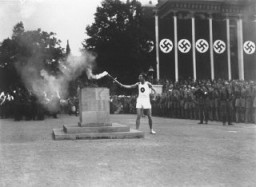
Soon after the Nazis assumed power in Germany, they launched a campaign to deprive Jews of their place in society. The effort began with an organized boycott of Jewish-owned businesses. Gangs arrested Jews, painted "Jews forbidden" onto shop windows, chanted antisemitic slogans, and blocked store entrances.
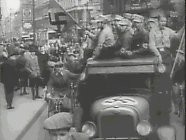
Learn about the Holocaust, the systematic, state-sponsored persecution and murder of six million Jews by the Nazi regime and its collaborators.
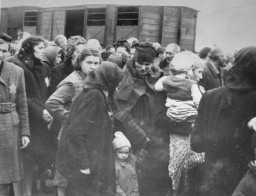
In October 1941, Romania, an ally of Nazi Germany, perpetrated mass killings of Jews in Odesa. Learn more about the Holocaust in Odesa and Ukraine.
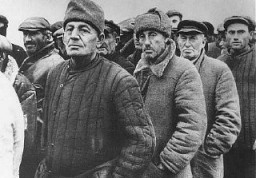
In May 1939, the German transatlantic liner St. Louis sailed from Germany to Cuba. Most of the passengers were Jews fleeing Nazi Germany. Learn more about the voyage.

An assembly point (the Umschlagplatz) in the Warsaw ghetto for Jews rounded up for deportation. Warsaw, Poland, 1942–43.
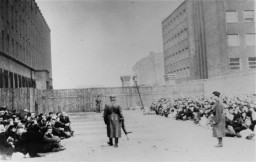
A group of young girls poses in a yard in the town of Ejszyszki (Eishyshok). The Jews of this shtetl were murdered by the Einsatzgruppen on September 21, 1941. Photo taken before September 1941.
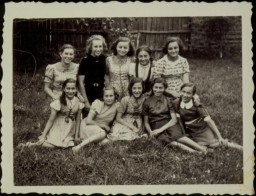
In this portrait, Helena Husserlova, wearing a Jewish badge, poses with her daughter Zdenka who is holding a teddy bear. The photograph was taken shortly before they were deported to Theresienstadt. Zdenka was born in Prague on February 6, 1939. On October 10, 1941, when Zdenka was just two and a half years old, her father was deported to the Lodz ghetto. He died there almost a year later, on September 23, 1942. Following his deportation, Helena and Zdenka returned to Helena's hometown to live with…
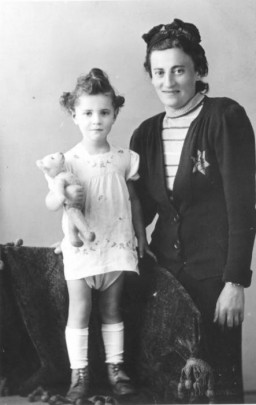
This photograph is a still from Soviet film footage of the liberation of Auschwitz. The film was made by the film unit of the First Ukrainian Front. Relief workers and Soviet soldiers lead child survivors of Auschwitz through a narrow passage between two barbed-wire fences. Standing next to the nurse and behind them (wearing white hats) are two sets of twin sisters. During the camp's years of operation, many children in Auschwitz were subjected to medical experiments by Nazi physician Josef Mengele.
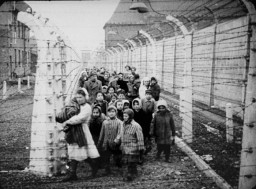
Prewar family portrait of members of the Danishevska family in Vilna, Lithuania, 1926–27. None of those pictured here survived the Holocaust.
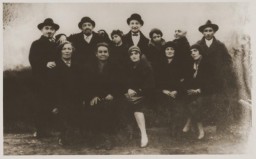
We would like to thank Crown Family Philanthropies, Abe and Ida Cooper Foundation, the Claims Conference, EVZ, and BMF for supporting the ongoing work to create content and resources for the Holocaust Encyclopedia. View the list of donor acknowledgement.